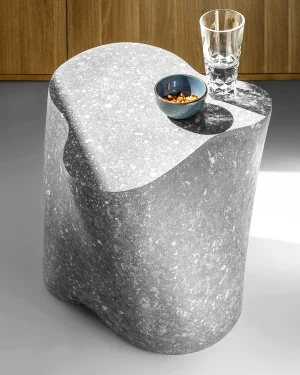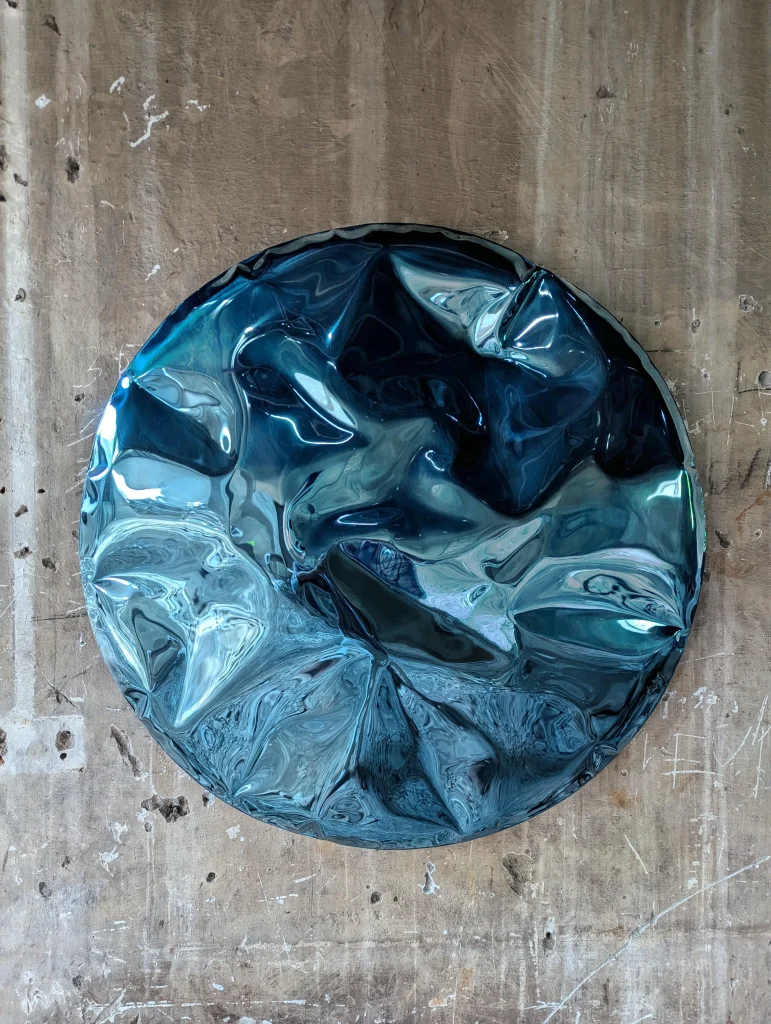
Embracing the Raw Beauty of Brutalist Design
Brutalist design: Embracing brutal honesty. Raw, unapologetic concrete. Imposing, bold forms. Enduring architectural icons. Timeless, utilitarian aesthetics. Mindful harmony with nature. Influential global movement. Striking, captivating allure. Honest, bold, and timeless.
What is Brutalist Design?
Brutalist design is an architectural style that emerged in the mid-20th century, particularly during the 1950s to the mid-1970s. It is characterized by its raw, rugged, and often imposing appearance, focusing on showcasing the unadorned beauty of materials, particularly concrete. The term “Brutalism” is derived from the French word “béton brut,” which translates to “raw concrete.”


Origins of Brutalist Design
Brutalist design originated in the mid-20th century, inspired by the architectural ideas of Le Corbusier and popularized by British architects Alison and Peter Smithson. The term “Brutalism” derives from “béton brut,” emphasizing the use of raw concrete as the primary material. This architectural style, prevalent in the 1950s to 1970s, prioritizes functionality and honest expression of materials, featuring bold, geometric forms and minimal ornamentation. Initially embraced for its utilitarian vision and cost-effective construction, Brutalism left an indelible mark on urban landscapes worldwide. Though polarizing, some Brutalist structures gained iconic status, and the style’s enduring influence is still visible in contemporary architecture.




What are the Key Characteristics of Brutalist Design?
Brutalist reimagined: Simple, raw elegance. Natural materials, neutral hues. Functional, light-filled spaces. Timeless, sustainable charm. Hygge-inspired comfort.
- Rawness: Unpolished, elemental, authentic materials.
- Boldness: Striking, audacious, commanding presence.
- Functionality: Practical, efficient, purpose-driven design.
- Timelessness: Everlasting, enduring, age-defying allure.
- Minimalism: Streamlined, unembellished, uncluttered aesthetics.


Current Views in Contemporary Art and Design
Brutalist design inspires contemporary art and architecture: raw materials, bold forms, timeless elegance. Interior design integrates minimalist, industrial elements. Sustainable practices embrace eco-friendly concepts. Resurgence evokes emotions, challenges conventions, reinterprets iconic movement.
Brutalist design’s nostalgic qualities and retro appeal have resonated with a younger generation, drawn to its mid-century modernism influences and timeless aesthetic. Additionally, contemporary artists and designers have blended Brutalist elements with other styles like minimalism, industrial design, and modern architecture, creating fresh and unique expressions.
As with any artistic movement, the views on Brutalist design in contemporary art and design are likely to evolve with changing cultural tastes and design trends. Nevertheless, the reinterpretation of Brutalism demonstrates how historical design movements can inspire new and innovative expressions, revitalizing iconic styles for contemporary audiences.
Read More: 25 Powerful Brutalist Seats For Your Contemporary Interior
The Impact of Brutalist Design on the Art World
Brutalist design impact: Inspires sculpture, mixed-media art. Influences aesthetics, photography, graphic design. Engages in conceptual commentary. Blurs art-architecture boundaries. Provokes thought, enduring inspiration.
Brutalist architecture often exhibit sculptural qualities with their strong geometric shapes and massive forms. This fusion of architecture and sculpture blurred the lines between the two disciplines and encouraged artists to experiment with scale and proportion in their artworks. Many Brutalist buildings serve as prominent landmarks and public art installations within urban landscapes.
The impact of Brutalist design on the art world goes beyond admiration, as some buildings face debates about preservation or demolition. This has sparked discussions about the importance of preserving architectural heritage and the role of Brutalism as a cultural symbol. Furthermore, Brutalist buildings, often associated with government or institutional structures, have become symbols of authority and bureaucracy. Artists have used these buildings as subjects in their works to explore themes of power, control, and the relationship between architecture and society.


Embracing Brutalist Design : Tips for Art Collectors
Embrace raw aesthetics, seek iconic artists. Prioritize scale, explore mixed media. Curate thoughtfully, support emerging talent. Connect with galleries, exhibitions.




Conclusion
Brutalist Design: A testament to rawness, boldness, and utilitarianism. Its profound influence on art and design echoes enduring allure, thought-provoking expression, and monumental structures. A celebration of austere aesthetics, it challenges us to redefine creativity while embracing the unfiltered beauty of industrial materials. Let Brutalist Design ignite a fearless and powerful approach to artistic exploration, leaving an indelible mark in the contemporary art world.
Discover Brutalist Design on Adorno
-

 “nail” Full Cutlery Set€200 incl. tax
“nail” Full Cutlery Set€200 incl. tax -

 Lago Marble Vase€830 incl. tax
Lago Marble Vase€830 incl. tax -

 Ball Foot Sculptural Chair, Vegan Cactus Leather€2.000 incl. tax
Ball Foot Sculptural Chair, Vegan Cactus Leather€2.000 incl. tax -

 Lava Stone Bookends Set€63 incl. tax
Lava Stone Bookends Set€63 incl. tax -

 Camber – stainless Steel Stool€539 incl. tax
Camber – stainless Steel Stool€539 incl. tax -

 Camber – stainless Steel Bench€818 incl. tax
Camber – stainless Steel Bench€818 incl. tax -
Piece on sale

 Isolation – Cork Wood Coffee TableOriginal price was: €1.800.€1.710Current price is: €1.710.
Isolation – Cork Wood Coffee TableOriginal price was: €1.800.€1.710Current price is: €1.710. -

 Camber – Coffee Table€1.615 incl. tax
Camber – Coffee Table€1.615 incl. tax -

 Pressure Bench€740 incl. tax
Pressure Bench€740 incl. tax -


 “a Shallow And Salty Ocean” Carafe & Shot Cup Set€378 incl. tax
“a Shallow And Salty Ocean” Carafe & Shot Cup Set€378 incl. tax -

 Ash Tray – Solid Aluminum€150 incl. tax
Ash Tray – Solid Aluminum€150 incl. tax -

 Ne1200/145 Pendant – Mat Stainless Steel & Clear Acrylic€1.390
Ne1200/145 Pendant – Mat Stainless Steel & Clear Acrylic€1.390 -

 Barvinok – Steel Side Table€1.850 incl. tax
Barvinok – Steel Side Table€1.850 incl. tax -

 Arc – Stainless Steel Table Lamp€479 incl. tax
Arc – Stainless Steel Table Lamp€479 incl. tax -

 Fold Table Light€1.100
Fold Table Light€1.100 -

 Jarra Clay Vessel€120 incl. tax
Jarra Clay Vessel€120 incl. tax -

 Mirror – Astra 30€304 incl. tax
Mirror – Astra 30€304 incl. tax -

 Rock ponds – Wall Piece€500 incl. tax
Rock ponds – Wall Piece€500 incl. tax -

 Tani – Steel Coffee TablePrice range: €700 through €800
Tani – Steel Coffee TablePrice range: €700 through €800 -


 ‘not In Service’ Coffee Table€1.875 incl. tax
‘not In Service’ Coffee Table€1.875 incl. tax -

 Accre – Small Ceramic Lamp€580 incl. tax
Accre – Small Ceramic Lamp€580 incl. tax -

 Ne1200/145 – Mat / Mirror Stainless Steel & Clear Acrylic Lamp€1.490
Ne1200/145 – Mat / Mirror Stainless Steel & Clear Acrylic Lamp€1.490 -

 Escudela 01 – Small Terrazzo Bowl€100 incl. tax
Escudela 01 – Small Terrazzo Bowl€100 incl. tax -

 Escudela 01 – Medium Terrazzo Bowl€150 incl. tax
Escudela 01 – Medium Terrazzo Bowl€150 incl. tax











